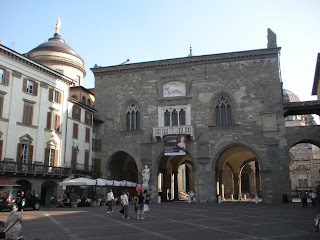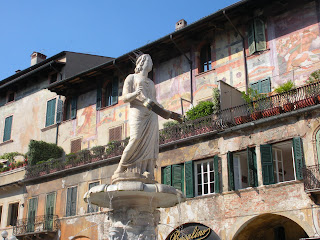
My second to last weekend in Europe, I hopped on a Ryan Air flight to northern Italy. My first stop took me to Bergamo, a medium size city in the north Italian region of Lombardy with an exceptionally well-preserved and still walled old town situated in the foothills of the Alps. Despite the industrial zone that surrounds it, the city was spared heavy bombing at the end of the Second World War and retained much of its historic center. Given its size, its architecture, and especially the relatively small number of people that make their way to the heart of the old city center, my visit to Bergamo was a relaxing surprise and a worthwhile diversion.
The following day, I went to Sirmione, a small town built at the end of a long peninsula jutting into the Lago di Garda, Italy’s largest alpine lake. This alpine riviera, like the other cities that dot the coastline of the lake plays host to a mix of locals and northern Europeans in search of a good tan. Aside from an awesome medieval fortress, complete with a drawbridge guarding entry to the town, the peninsula also contains the ruins of a once immense Roman bath complex that made use of the medicinal qualities of natural hot springs found in this part of the lake and more gelato vendors than I could count.
In the afternoon, I made it to Verona in the neighboring region of Veneto. Once a major Roman town, at Verona’s heart still stands an impressive coliseum. Also of interest for an architecture geek like myself were the city’s Romanesque churches; much older than any of the parishes in Seville. Like a good Shakespeare fan, I visited to the Casa di Giulietta where I stumbled across an Italian language reenactment of the famous balcony scene. My final stop took me to the old fortress aside the river.
On Sunday, I made it to Milan, Lombardy’s capital. Though I was only able to see part of the city, I did make it to the top of the Cathedral and to several other historical sites. For instance, I had a you-know-you-are-a-historian-when moment at the tomb of Saint Ambrose thanks to having read and taught the Confession now more times than I can remember. Certain readers, you know who you are, will be surprised to hear that I never once stopped into a single clothing store in this fashion crazy town or its famous opera house, La Scala. I’m happy to say there is far more to Milan than merely its catwalks, and plenty of reasons to return.
Check out the pics below.































































